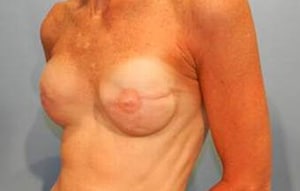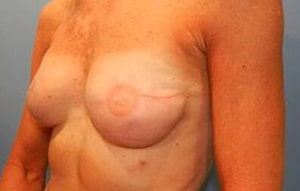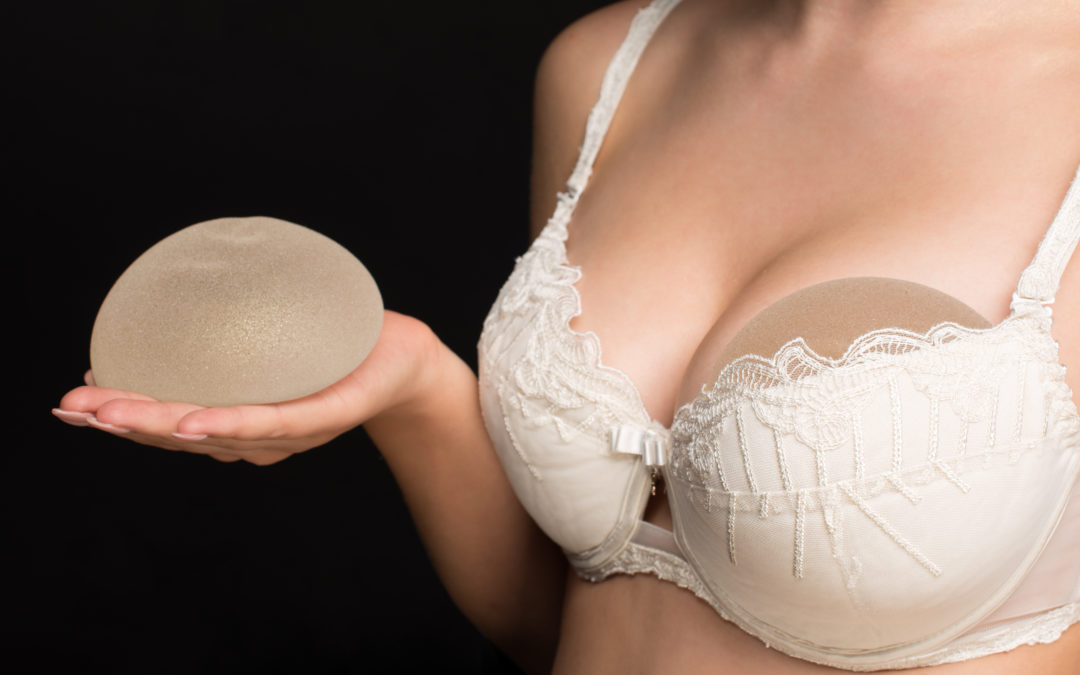These Advances in Breast Reconstruction Help to Achieve More Natural Breasts for My Patients
In the last decade the most common method of breast reconstruction has been the placement of a tissue expander at the time of mastectomy. This is known as immediate reconstruction. After the general surgeon completes the mastectomy, the plastic surgeon places a tissue expander underneath the pectoral muscle and the fascia beyond the bottom edge of the muscle.
A tissue expander is essentially a saline breast implants with a valve on the surface. After the patient has healed from the mastectomy she visits the office usually once a week and we use a tiny needle to access this valve and add salt water to the implant. Over a number of weeks the new breast will take shape.
The next step after expansion is completed is for the patient to undergo an outpatient surgery in which I remove the tissue expander and place a permanent implant usually consisting of silicone gel. If this is a one-sided reconstruction I may carry out a procedure to the opposite breast to balance it with the reconstructed breast.
Disadvantages of Implant Breast Reconstruction
Can Now Be Overcome
The process that I have just described works well for the majority of patients, but there are some disadvantages. First of all the breast tends to have a somewhat top-heavy shape. Even when I take measures to try to stretch out the lower pole of the breast the general shape of the silicone implants that have been available up to now tends to lead to a situation where there is almost as much volume in the upper portion of the breast as in the lower portion. This, of course, is not the ideal breast shape.
A second disadvantage is that, unlike a breast augmentation, the implant is not camouflaged by the natural breast tissue. Because the tissue that is covering the implant is thin, suboptimal aspects of the implant such as rippling or firmness may reveal themselves.
A third potential problem is that when I am positioning the tissue expander at the first operation I place the expander underneath the pectoral muscle but also underneath a thin somewhat tight area of fascia that extends below the pectoral muscle down toward the abdomen. Sometimes this tissue is very weak, sometimes it is stiff, so that it is difficult to get comfortable coverage over the expander. In this situation there may be restrictions on the lower portion of the breast when expansion is carried out and this also makes the process of tissue expansion more uncomfortable.
I will now tell you about three advances that help us to overcome the limitations that I have just described.
ADVANCE NUMBER 1
Acellular Dermal Matrix Makes A Better Curve In The Lower Breast
Acellular dermal matrix is essentially a collagen scaffolding into which the body’s own tissue will grow. It is tremendously useful in breast reconstruction because it enables me to eliminate restrictions on the lower portion of the reconstructed breast.
If I find during a breast reconstruction that the tissue over the expander is going to be too tight I can simply place a piece of this acellular dermal matrix as a crescent in the lower portion of the breast and this will allow the expander to stretch out nicely. It also makes in early recovery from breast reconstruction and tissue expansion more comfortable for the patient in most cases.

Patient with standard implants for reconstruction.

Patient converted to form stable implants and fat transfer.
Acellular dermal matrix also seems to counteract a tendency in certain people to make too much scar issue around tissue expanders and breast implants, which can sometimes lead to a firmer breast than is desirable.
ADVANCE NUMBER 2
Fat Transfer Camouflages Breast Implants and Gives a Natural Feel to the Breast
For the last five years I have been working with fat transfer to improve my results in breast reconstruction. The reason that fat is so helpful is that it allows me to soften the transitions at the edge of the breast implant and also provides a greater degree of padding over the implant so that the breast has a much more natural feel.
Think of fat transfer as a gentle low-pressure form of liposuction. I borrow fat from one zone of the body, perhaps the abdomen or the thigh, and transfer it to the areas that overlie the breast implant. This gives the reconstructive breast a natural feel and softness.
ADVANCE NUMBER 3
Form Stable Implants Maintain A Natural Breast Shape
For a number of years patients in Europe and Canada have benefited from breast implants and have a much more natural shape. These are referred to by a variety of names including full form stable, gummy bear, and anatomical. These implants are finally available for patients in the United States.
With these implants the silicone gel is very highly cross-linked. This means that it can hold a specific shape. With this in mind it is possible to create a shape that more closely mimics that of the natural breast, which is fuller in its lower portions and tapers gracefully in its upper portions.
I believe that form stable implants combined with fat transfer represent the current state-of-the-art in implant-based breast reconstruction
It’s All About The Natural
I feel that the results that I can provide my breast reconstruction patients are significantly better than what I could accomplish for patients several years ago. Although the goal of a perfectly natural breast is elusive, we are moving in that direction thanks to the advances that I have explained to you today.



